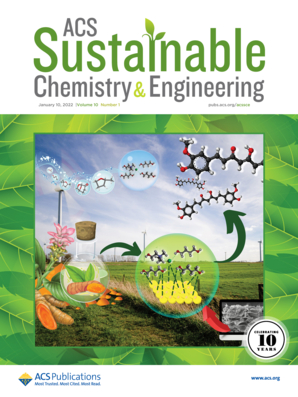Pathway-Dependent Ion Effects for Electrocatalytic Olefin Epoxidation
IF 7.1
1区 化学
Q1 CHEMISTRY, MULTIDISCIPLINARY
引用次数: 0
Abstract
Electrocatalytic oxidation is an emerging substitute for industrially relevant oxidation processes due to its mild conditions and high safety, and the catalytic performance is not only associated with the catalyst structure but also closely related to the interfacial ionic microenvironment. In this work, by using electrocatalytic olefin epoxidation as a representative example, we elucidated the different influencing mechanisms of the interfacial ionic environment toward two distinct mechanisms of indirect oxidation and direct oxidation through a combinatory study via kinetics, capacitance analysis, in situ spectroscopy, and theoretical calculation. In the indirect epoxidation system, the reaction pathway involves the hydrophilic activation of the mediator and its further reaction with olefin near the hydrophobic environment. The hydrophilicity/hydrophobicity characteristics of the anions tailor the interface for dispersing the solvent domains and active species, and the amphipathic sulfonimide anions create optimal performance. In the direct epoxidation system, the large olefin substrate must penetrate into the densely packed anion double layer to contact the surface oxygen species generated in situ on the electrode to be epoxidized, and the limiting factor turns into the crowdedness of the double layer or the anion size. The smaller tetrafluoroborate anions outperformed other larger anions by minimally impacting mass transfer. This work not only highlights the key role of the interfacial ionic environment in modulating organic electrosynthesis but also emphasizes the distinct influences of the microenvironment under different reaction pathways.

求助全文
约1分钟内获得全文
求助全文
来源期刊

ACS Sustainable Chemistry & Engineering
CHEMISTRY, MULTIDISCIPLINARY-ENGINEERING, CHEMICAL
CiteScore
13.80
自引率
4.80%
发文量
1470
审稿时长
1.7 months
期刊介绍:
ACS Sustainable Chemistry & Engineering is a prestigious weekly peer-reviewed scientific journal published by the American Chemical Society. Dedicated to advancing the principles of green chemistry and green engineering, it covers a wide array of research topics including green chemistry, green engineering, biomass, alternative energy, and life cycle assessment.
The journal welcomes submissions in various formats, including Letters, Articles, Features, and Perspectives (Reviews), that address the challenges of sustainability in the chemical enterprise and contribute to the advancement of sustainable practices. Join us in shaping the future of sustainable chemistry and engineering.
 求助内容:
求助内容: 应助结果提醒方式:
应助结果提醒方式:


